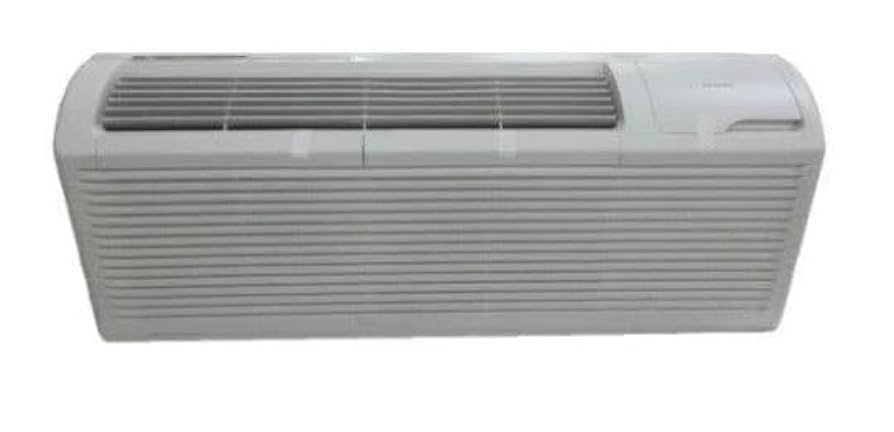PTAC systems, or Packaged Terminal Air Conditioners, are self-contained heating and cooling units designed for room-specific climate control. These units have become a preferred option for commercial spaces that need precise temperature regulation and improved energy management. Commercial PTAC Units For Sale are widely available for property owners and developers looking to improve performance and reduce operational expenses. By focusing on individual room control, PTAC systems help lower waste, support energy goals, and offer dependable comfort for occupants, making them a strong choice for efficient building operations.
PTAC Systems
PTAC systems combine heating and cooling equipment within a single, wall-mounted unit. Unlike central HVAC systems, which rely on ductwork and centralized control, PTAC units operate independently in each room. This structure includes essential components like compressors, evaporators, condensers, and thermostats packed into one compact unit. Their design allows for direct temperature management without impacting other zones. PTAC systems are commonly installed in hotels, hospitals, apartments, and offices, where individualized comfort is essential. This decentralized approach sets the foundation for greater energy efficiency and operational flexibility.
Energy Efficiency Advantages of PTAC Systems
PTAC systems excel at zone-specific temperature control, meaning they heat or cool only occupied spaces. This eliminates the inefficiency of cooling entire floors when only a few rooms need climate adjustment. Each unit can be set to different temperatures, optimizing energy use across the building. PTAC units typically feature programmable thermostats and variable fan speeds, allowing for precise control and reduced power usage during off-peak hours. Because they operate independently, they can run without engaging full-building HVAC systems, helping property owners manage energy consumption more effectively.
Cost Savings and Operational Benefits
PTAC systems offer tangible financial advantages for building owners and facility managers. Their compact, modular design allows for quick installation with minimal disruption, and they do not require the extensive ductwork or infrastructure that central systems demand. Maintenance is simpler because issues can be isolated to a single unit rather than affecting the entire building. These factors combine to produce measurable savings in both the short and long term.
-
Lower installation costs compared to central HVAC systems
-
Easy unit replacement without building-wide shutdowns
-
Reduced infrastructure and ductwork expenses
-
Minimized downtime during maintenance or upgrades
Environmental Impact and Sustainability
PTAC systems contribute positively to environmental goals and green building standards. Modern units use advanced refrigerants with lower global warming potential, reducing environmental harm. Their efficient components help lower overall energy demand, which leads to reduced greenhouse gas emissions. By controlling temperatures at the room level, PTAC systems prevent unnecessary energy waste, supporting compliance with certifications like LEED. Their eco-friendly operation helps building owners align with sustainability initiatives while maintaining reliable performance and occupant comfort. This makes PTAC systems valuable assets in environmentally conscious construction strategies.
Modern Innovations Enhancing Efficiency
Technological advancements have significantly improved PTAC system performance. Many modern units include Wi-Fi connectivity, smart thermostats, and remote monitoring capabilities that give building managers real-time control. Inverter technology ensures smoother temperature regulation while using less electricity. Compressor innovations have reduced noise and improved power efficiency. PTAC systems can also integrate with building management systems (BMS), allowing centralized oversight of decentralized units. These features simplify operation, optimize energy usage, and provide valuable data insights, ensuring each unit contributes to a building’s overall efficiency strategy.
Conclusion
PTAC systems improve efficiency through localized temperature control, reduced energy use, and lower operational costs. Their eco-friendly designs support sustainable building goals while offering reliable performance. Modern innovations like inverter technology and smart controls elevate their capabilities further. Whether for hotels, offices, hospitals, or apartments, PTAC units deliver measurable benefits in comfort and cost savings. Upgrading to efficient PTAC systems allows property owners to strengthen their energy strategies, reduce waste, and increase building value over time. They are a practical, future-ready choice for modern HVAC planning.
FAQs
Q1. How are PTAC systems different from central HVAC systems?
PTAC systems work independently in each room, avoiding the need for ductwork and enabling targeted temperature control that reduces unnecessary energy use.
Q2. What types of buildings benefit most from PTAC systems?
Hotels, hospitals, offices, and apartment complexes benefit greatly, as these properties often require zoned control and flexible climate management.
Q3. How do PTAC systems help reduce operational costs?
They use less energy, require simpler installation, involve minimal ductwork, and allow maintenance on individual units without affecting entire buildings.
Q4. Do PTAC systems support sustainability certifications?
Yes. Many models use eco-friendly refrigerants and efficient components, supporting standards like LEED and other green building initiatives.
Q5. What modern features make PTAC systems more efficient today?
Smart controls, Wi-Fi connectivity, inverter compressors, and integration with building management systems enhance efficiency, comfort, and operational control.
